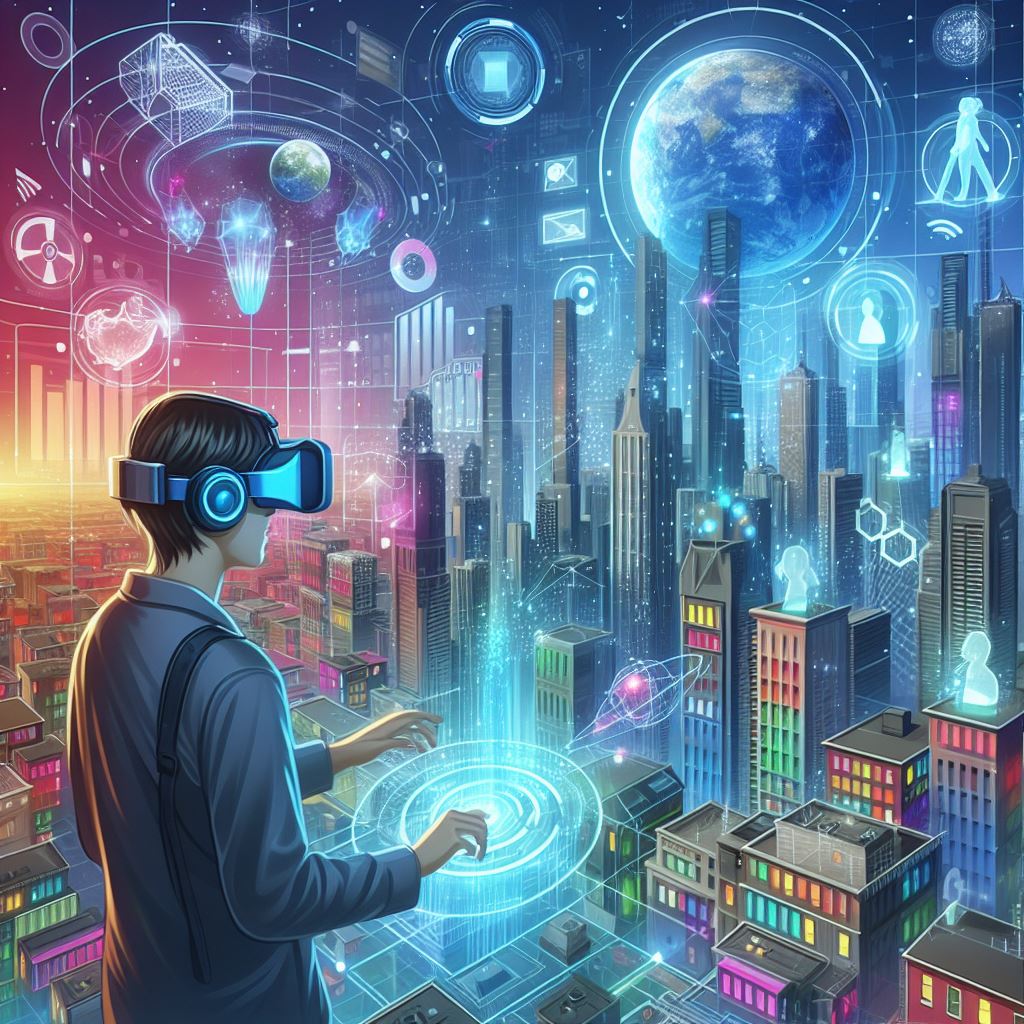The Extended Reality (XR) industry, encompassing Virtual Reality (VR), Augmented Reality (AR), and Mixed Reality (MR), is on a rapid growth trajectory, poised to revolutionize multiple sectors. As technology evolves, XR is set to transform how we interact with digital and physical environments, offering immersive experiences and unprecedented opportunities. This article explores the key innovations, emerging trends, and future outlook for the XR industry.
Technological Innovations Shaping XR
1. Next-Generation Hardware Developments
The XR industry is experiencing significant advancements in hardware. Upcoming XR devices promise higher resolution displays, wider fields of view, and enhanced ergonomics. Innovations such as wireless connectivity and standalone headsets are set to improve user experience by eliminating cables and increasing mobility. These advancements will make XR more accessible and comfortable for extended use.
2. Integration of AI and Advanced Software
Artificial Intelligence (AI) and machine learning are driving innovation in XR software. AI enhances real-time object recognition, user interaction, and environment adaptation, creating more responsive and intelligent XR experiences. Enhanced software platforms will offer more sophisticated development tools for creating immersive content and applications, making it easier for developers to build engaging XR environments.
3. Impact of 5G and Edge Computing
The rollout of 5G and advancements in edge computing are expected to have a profound impact on XR technology. 5G’s high-speed, low-latency connectivity will enable seamless, real-time interactions and high-quality content streaming. Edge computing will reduce latency by processing data closer to the user, improving performance and responsiveness for XR applications.
Industry Overview
The extended reality Industry is projected to reach USD 111.5 billion by 2028 from USD 40.1 billion in 2023, at a CAGR of 22.7% from 2023 to 2028. The major factors driving the growth of the extended reality market include availability of affordable VR devices, increasing demand for extended reality in entertainment and gaming industry, and the surging adoption of extended reality in healthcare sector.
Download PDF Brochure @ https://www.marketsandmarkets.com/pdfdownloadNew.asp?id=147143592

Emerging Trends in XR
1. Integration into Daily Life
XR technology is increasingly becoming integrated into everyday activities, transforming work, education, and entertainment. Virtual meetings, immersive educational tools, and augmented reality experiences are becoming part of daily routines. This integration is driving widespread adoption and expanding the use cases for XR technology.
2. Expansion in Enterprise Applications
The enterprise sector is seeing a surge in XR adoption for training, simulation, and remote assistance. Industries such as manufacturing, healthcare, and logistics are leveraging XR to improve operational efficiency, enhance training programs, and provide remote support. The versatility of XR solutions is addressing diverse business needs and driving industry-specific innovations.
3. Evolution of Social and Gaming Experiences
Social and gaming applications are evolving with XR technology, offering more immersive and interactive experiences. Virtual worlds and social platforms within XR are creating new opportunities for engagement and content creation. The gaming industry, in particular, is seeing innovations that enhance player immersion and interactivity.
Extended Reality Industry Challenges and Considerations
1. Privacy and Security Issues
As XR technology becomes more prevalent, privacy and security concerns are rising. The collection of personal data, including biometric and location information, necessitates robust security measures and transparent data management practices. Ensuring user privacy and protecting against cyber threats will be critical for maintaining trust and compliance.
2. Accessibility and Inclusivity
Ensuring XR technology is accessible to all users, including those with disabilities, is a significant challenge. Efforts must be made to develop inclusive designs and affordable solutions to broaden XR’s reach. Addressing accessibility issues will be key to fostering equitable access and widespread adoption.
3. Content Development and Standardization
The growth of XR technology calls for the development of standardized frameworks for content creation and platform interoperability. Establishing industry standards will help ensure consistent quality and compatibility across different XR systems, supporting a cohesive and high-quality user experience.
Future Outlook of Extended Reality Industry
1. Convergence of XR Technologies
The convergence of VR, AR, and MR is expected to create more seamless and integrated XR experiences. Advances in technology will enable sophisticated blending of virtual and physical elements, leading to new applications and use cases. This convergence will drive further innovation and expand the possibilities of XR technology.
2. Expansion into Emerging Markets
The XR industry is poised for growth in emerging markets such as Asia-Pacific and Latin America. As these regions experience increased industrialization and digital transformation, the demand for XR technology will rise. Expanding into these markets presents opportunities for growth and new applications.
3. Growth of Collaborative and Interactive Environments
The future of XR will see the rise of collaborative and interactive environments where users can engage and interact in shared virtual spaces. This trend will enhance remote work, social interaction, and collaborative projects, creating new ways for people to connect and collaborate.
The Extended Reality industry is on the brink of a transformative era, driven by technological advancements, emerging trends, and expanding applications. Next-generation hardware, AI integration, and advancements in 5G and edge computing are set to redefine XR experiences. As the industry evolves, addressing challenges related to privacy, accessibility, and content standardization will be crucial for fostering innovation and ensuring widespread adoption. The future of XR promises exciting developments and opportunities, shaping how we interact with the digital and physical worlds.
Top Extended Reality Companies
Microsoft (US), Sony Group Corporation (Japan), Meta Platforms, Inc. (US), HTC Corporation (Taiwan), Google (US), PTC Inc. (US), Seiko Epson Corporation (Japan), Apple Inc. (US), Qualcomm Technologies, Inc. (US), and Samsung Electronics Co., Ltd. (South Korea).

